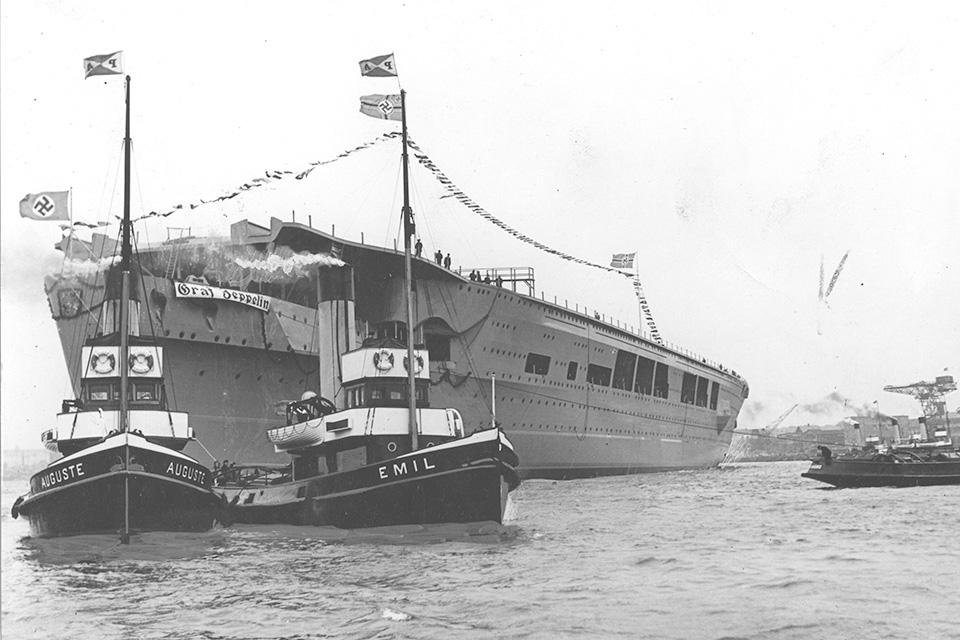Q. Why didn’t Germany have aircraft carriers in World War II?
Tom DeBarber
A. Nazi Germany was constantly changing its priorities. A carrier was, in fact, laid out in Kiel, a German shipbuilding harbor, on December 26, 1936, and launched as Graf Zeppelin on December 8, 1938. The ship was never completed, however. After Germany’s victories in the west in 1940, the Kriegsmarine focused more on coastal guns and other defenses for its new bases.
When it came to carrier aircraft, there were plans for navalized Me-109T fighters (the “T” signifying träger, or “carrier”) and Ju-87E dive-bombers. But Reichsmarschall Hermann Göring insisted that the Luftwaffe’s growing needs took precedence over specialized naval aircraft. After the disappointing performance of German warships in the 1942 Battle of the Barents Sea, newly installed naval commander in chief Karl Dönitz talked Adolf Hitler out of scrapping the entire fleet, but the on-and-off work on Graf Zeppelin ceased for good.

Q. What was the role of the country of Colombia in the Korean War, particularly at the Fifth Battle of Hill 266 (known as Old Baldy)?
Nancy Warthan
A. Colombia was the only South American nation to participate in the Korean War, first sending troops to join U.S. and United Nations forces on November 1, 1950. Ultimately, 5,100 Colombians would serve.
At Old Baldy, the Chinese pushed the U.S. 7th Infantry Division from the hill on March 26, 1953, leaving only the Colombian Battalion. The Colombians’ counterattack dealt a serious blow to the Chinese, who suffered an estimated 750 casualties. The Colombians lost 20 percent of their troops, but if not for them, the Chinese might have advanced deep into U.N. territory.
Jon Guttman, World History Group’s research director, is the author of many military histories.

.jpg)



